SEQUOIA (Day 4 - part 3)
We finished the tour, walked back up the path to the car and then began a little scenic driving tour out to Moro Rock.
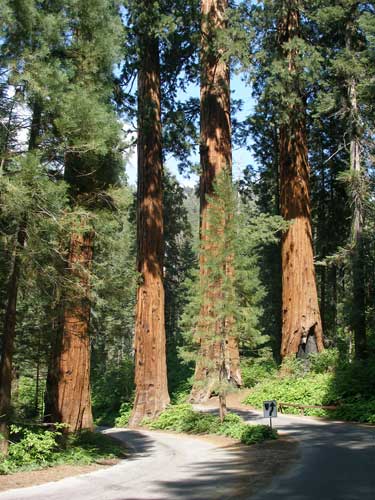
The Four Guardians...

... border the road.
Auto Log fell in 1917. It has a base diameter of 21 feet. Over the years, many vehicles have been photographed on this "log driveway." Today you just walk on it.
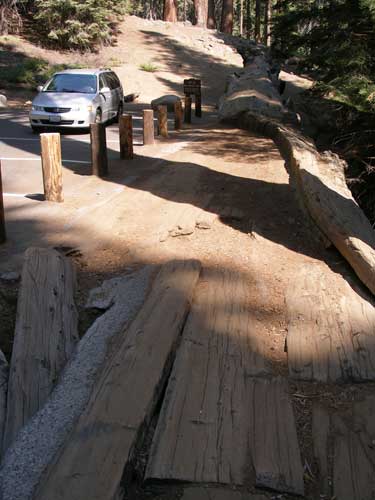
The entrance to the log is blocked off to avoid temptation.
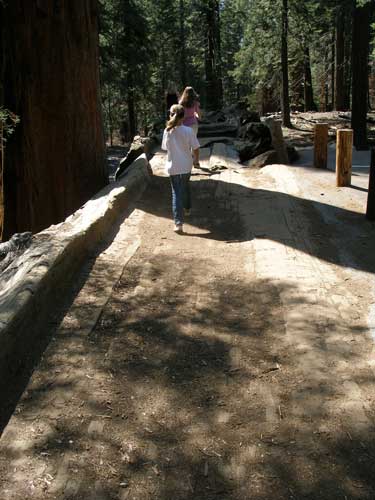

Then...

... and now

This group of eight trees is called the Parker Group, for the members of the Parker family. Captain James Parker of the 4th cavalry in the US Army was acting superintendent of the park from 1893 - 1894.

Tunnel Log fell across a park road in 1937 due to natural causes. The following year, an 8-foot tall, 17-foot wide tunnel was cut through it, making the road useable again. The tree, was 275 feet tall and 21 feet in diameter.

From the Hanging Rock viewpoint, we could get a good lock at Moro Rock with its elevation of 6,725 feet. This granite dome has a 400-step (very scary looking) stairway, built in the 1930s by the Civilian Conservation Corps, leading to the top.

Moro Rock

Looking down the valley

The stairway climbs up this steep ridge...

... all the way to the top.
The Giant Forest Museum helped one get a better grasp on how truly massive these trees are.

As early as the 1890's, people began building here. By the 1950's, this area was packed with tourists, a gas station, 100 cabins and motel rooms, shops, a post office and even a sewage treatment plant. In the 1970's, people realized the damage being done to the area. The last of the buildings came down in 1999. All that is basically left now is the museum.

The museum today

The Sentinel is 2,200 years old. While it looks big compared to most trees, it is just average size for the surrounding sequoia grove.

At 700 tons, the Sentinel weighs more than two fully loaded jumbo jets. Unlike other conifers, whose trunks taper to a point, the sequoia's columnar trunk remains thick far up the tree. This is what gives them their huge mass.

Since it's a bit difficult to climb a real sequoia, here we were able to "walk" one. This ruler is as long as the tree is tall.
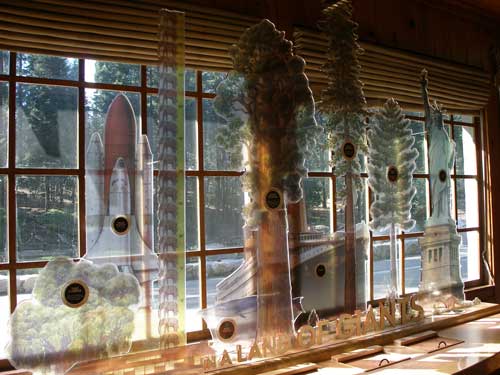
A few height comparissons
Across from the museum was the Big Trees Trail which led us to the Round Meadow.

A beautiful walk
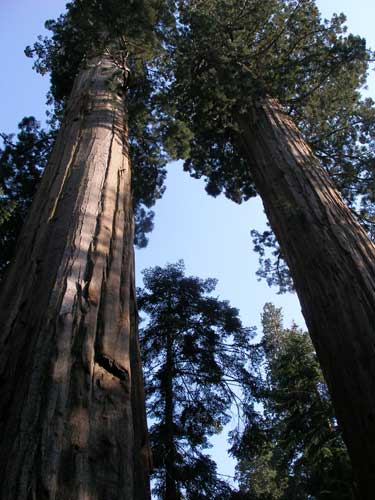
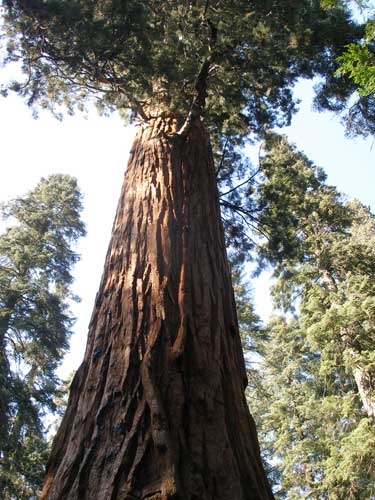
The Clara Barton tree. Clara (1821 - 1912) was a pioneer nurse who founded the American Red Cross.

A half & half cone!
As soon as we arrived at the meadow, we saw a Black Bear! It casually wandered in from the meadow, crossed the trail (ignoring the numerous people with cameras) and continued to search for dinner among the foliage. Apparently the bears are quite common in this meadow.




These stones represent the "footprint" of twin sequoias named Ed by Ned. Named by John and James Jordan in 1906, the two trees grew so close together that their bases joined. It is 34 feet long and 25 feet wide.


Ed by Ned... two trees that look like one
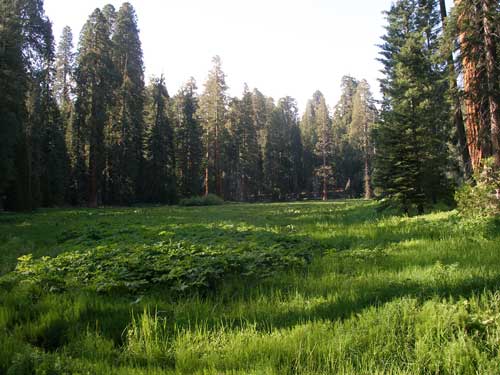
Round Meadow

Why are there no trees in the meadow? The answer is because it's too wet for them. Rainwater and melting snow collects in a depression in the bedrock here. But by growing near the meadow instead of in it, the giant trees can still take advantage of all the moisture.

In some areas here, the bedrock is very close to the surface, leaving just a thin layer of soil (sometimes less than 3 feet). But this is enough for the big trees whose roots spread out instead of go deep.

When a giant sequoia does fall over, it leaves room for new trees to grow.

This tree isn't going to let a little "pebble" stop it!
At the far end of the meadow were a couple more bears, slowly going about their business.
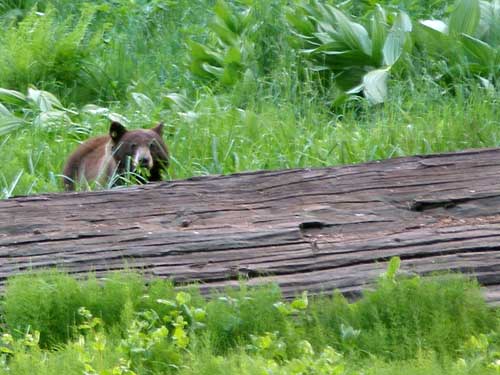


Number 56, apparently


There used to be a restaurant here.

We left the meadow, made our way back to the car then drove back to Stony Creek.
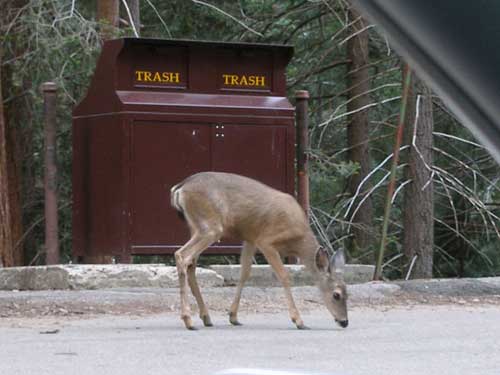
The twilight hours brought the deer out to the road.
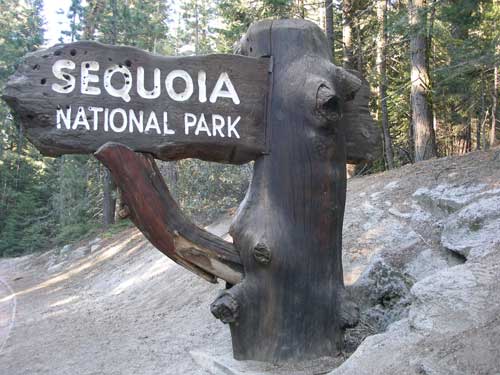
return • continue

